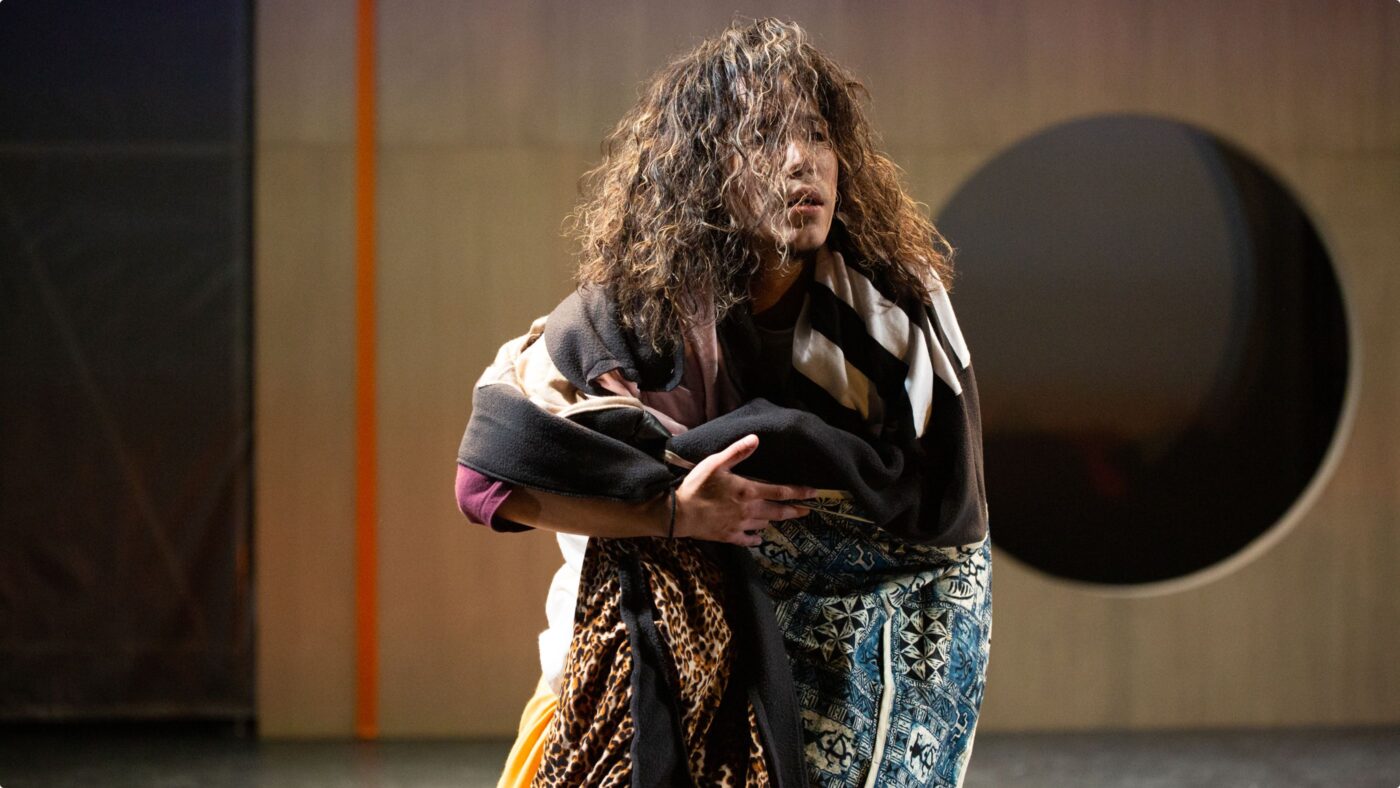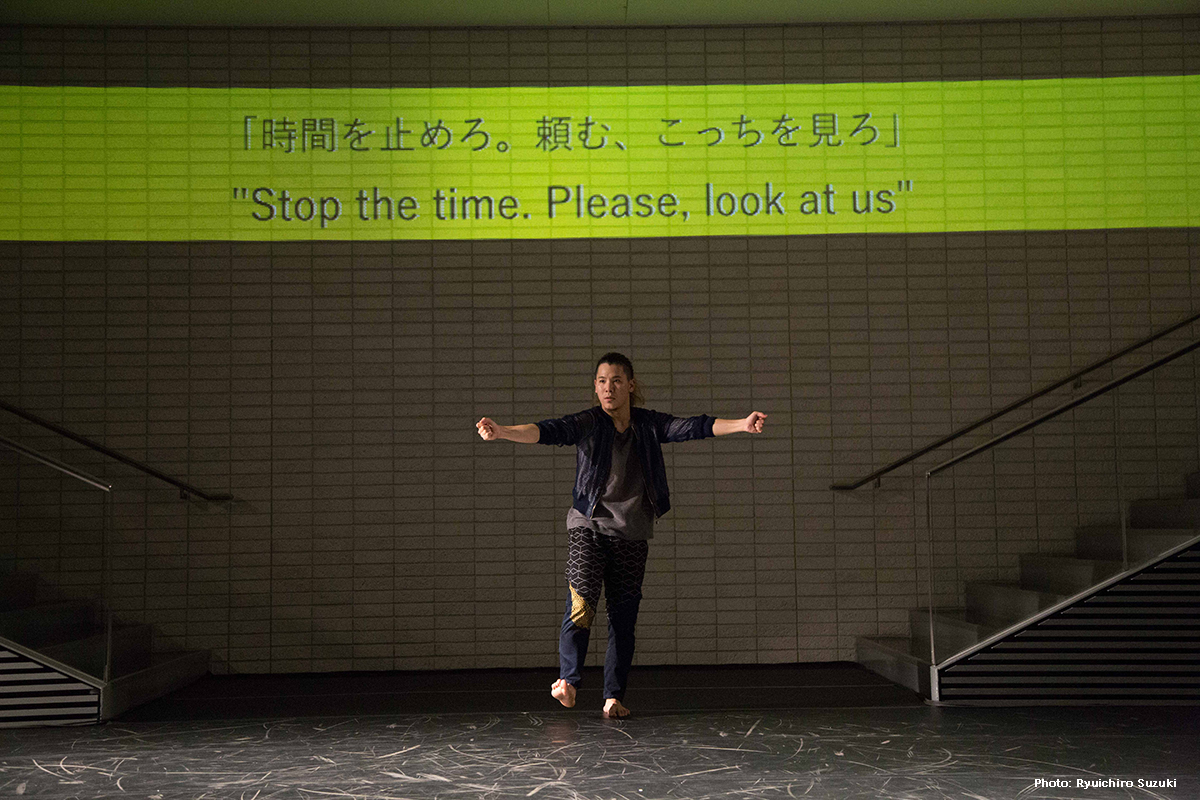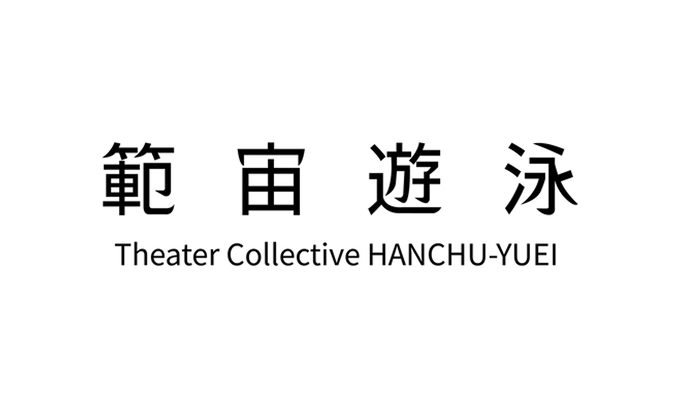Interview:
Inside Japan Selection
Theater Collective HANCHU-YUEI —
The Unknown Dancer in the Neighborhood


Japan is arguably home to one of the highest numbers of theatre companies in the world. The majority begin as collectives of students who meet at the same school. But with such volume comes transience: many disband or fade away, and even those that endure often remain obscure. Against this backdrop, Hanchu-Yuei stands out as a rare success story. Drawing attention since the members were in their early twenties, the company has now entered its 18th year and steadily expanded both its reach and recognition, transitioning from a rising group of young artists to respected mid-career professionals.
Much of their early acclaim came from a wholly original staging method: projecting text (dialogue and sound effects) and photographs onto the theatre’s walls via projector, assigning them equal weight and presence as the actors on stage. These flat visuals spark the audience’s imagination in a way reminiscent of manga, while also offering a posthumanist perspective. Their compact, portable setup—requiring only a small projector—has intrigued theatre practitioners both within Japan and abroad. Girl X, which used this technique to great effect, earned praise at Japan’s largest theatre platform TPAM (now YPAM), and went on to win Best Script and Best Production at the 2014 Bangkok Theatre Festival.
But more than the staging, it is the writing of resident playwright Suguru Yamamoto that deserves emphasis. While Yamamoto pioneered the projection-based style, his current passion lies increasingly with text. As a playwright, he is remarkable for his distinctive themes and language.
Yamamoto’s central concern is the nature of good and evil in society. At the heart of his work lies a fundamental, almost mythic question: “Where does evil originate, why does it flourish as though it were natural, and can we create a form of good powerful enough to counter it?”
Whether dealing with heinous crimes, like indiscriminate murders, sexual misconduct, the annoying habits of a neighbour, or various forms of discrimination, his plays explore the blurred lines between perpetrators, victims, and uninvolved bystanders. He questions whether evil truly arises from individuals, whether it is possible to distinguish between those directly involved and those merely living in the same era and society. His stories suggest that good and evil are not opposites, but points along a gradient—sometimes adjacent, sometimes indistinguishable. These narratives unfold at emotional speed, using shifting perspectives and a highly narrative style.

The play The Unknown Dancer in the Neighborhood , presented at this year’s Edinburgh Festival, is a quintessential Yamamoto piece. According to producer Momo Sakamoto, it acts almost as Yamamoto’s creative self-introduction. The play weaves a wide array of motifs, offering entry points for audiences from diverse cultural backgrounds. Each character’s speech style varies significantly, showcasing the nuanced ways Japanese indicates identity through grammar—a feature difficult to convey in English subtitles but present in the performance’s overall rhythm and tone.
The Unknown Dancer in the Neighborhood is written as a solo performance. The story begins with the murder of a young sex worker and spirals into a chain of monologues from a grieving mother, a young man working at the fringes of the sex industry, an unborn foetus, and an elderly person who feels out of place. One performer embodies all these characters—and dances them too. Through this structure, the play’s layers of malice and kindness dissolve the boundaries between victim and perpetrator, between those involved and those on the sidelines.
Taking on this formidable task is Wataru Kitao, a rising dancer and choreographer who leads the company Baobab. In this production, he demonstrates not only his physical prowess but rare expressive ability as an actor, portraying 25 roles including people of various ages and genders, a dog, and even a train.
Kitao and Yamamoto are university classmates who inspired each other during their student days. When Yamamoto began his solo project in 2015 and completed this monodrama, he entrusted it to Kitao, recognising the physical skill required to fully realise its potential. His instincts proved right—the premiere, held in an intimate 60-seat theatre, garnered strong acclaim, and the piece has since been revived multiple times, not only in Japan but including in New York.
From the start, both artists believed the play’s meaning would evolve with time, and that their own ageing would deepen the expression. Now, a decade later, they hope to bring the piece to audiences in Europe and Asia for the first time.
Given the script’s density, there’s ongoing discussion about refining subtitle translations. Looking ahead, the team envisions further stagings—possibly involving female performers or students in workshops, presenting the piece with multiple actors. They believe The Unknown Dancer in the Neighborhood is flexible enough to support such new versions, and are keen to pass it on to new generations and regions.

This future-facing vision stems from Hanchu-Yuei’s long-standing commitment to international collaboration. As Sakamoto explains, when planning a production, it feels natural to think beyond Japan.
“Our first overseas performance was in Malaysia in 2014. That experience opened our eyes to just how much we didn’t know—and how much we could gain. In Malaysia, rehearsal rooms had no tables or chairs. Everyone sat or lay on the floor. At first, it surprised us, but then we realised how relaxed and enjoyable it was. These small cultural experiences stimulate and enrich us, broadening our perspective. We want to keep learning from others—and share our methods in return.”
Delivering their work to unfamiliar audiences, and receiving feedback in turn, is essential. The Unknown Dancer in the Neighborhood begins like a fable, recounting a fictional incident that might have taken place in a Japanese city. Whether the performance succeeds may ultimately hinge on one thing: whether, by its end, Edinburgh and the play’s unnamed location feel like neighbouring towns in the audience’s imagination.
Original Text by Kyoko Tokunaga
Translated by SOIL Team
